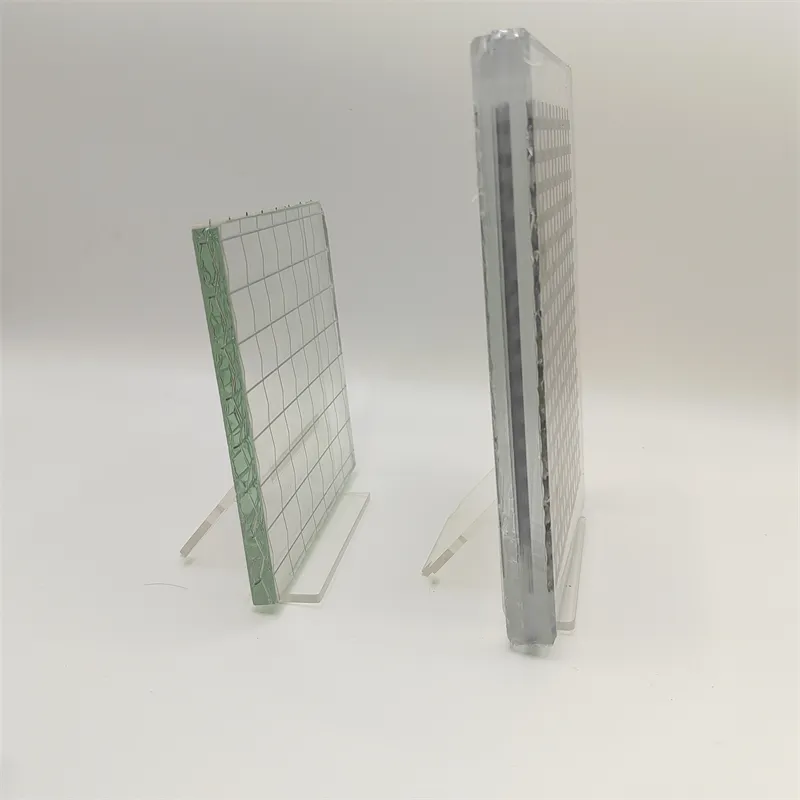Dec . 14, 2024 06:37 Back to list
Price Analysis of 6.38mm Laminated Glass in Today's Market Trends
Understanding the Pricing of 6.38 mm Laminated Glass
Laminated glass is a popular choice in modern architecture and design due to its unique combination of safety, aesthetics, and functionality. One of the most common variants is the 6.38 mm laminated glass, which is often preferred for its optimal thickness and performance. Understanding its pricing is crucial for both consumers and professionals in the construction and design industries. In this article, we will explore the factors influencing the price of 6.38 mm laminated glass and its applications.
What is Laminated Glass?
Laminated glass is made by sandwiching a layer of polyvinyl butyral (PVB) between two or more layers of glass. This process not only enhances safety but also provides sound insulation and UV protection. When broken, laminated glass holds together due to the PVB layer, reducing the risk of injury and minimizing the chance of glass shattering. The 6.38 mm thickness (which usually consists of two 3 mm glass sheets and a 0.38 mm PVB layer) strikes a balance between strength and weight, making it an ideal choice for various applications.
Factors Affecting the Price of 6.38 mm Laminated Glass
1. Material Quality The quality of the glass and PVB used significantly influences the price. High-quality materials enhance safety, durability, and overall performance, leading to higher costs.
2. Manufacturing Process The complexity and technology of the manufacturing process can also affect pricing. Advanced techniques that ensure better bonding and fewer defects typically come at a premium.
3. Customization Many consumers seek customized size, color, or texture for their laminated glass, which can increase the price. Custom options may require additional labor and materials, impacting the overall cost.
6.38 mm laminated glass price

4. Market Demand Like any product, the price of laminated glass can fluctuate based on market demand. Factors such as economic growth, construction activity, and consumer preferences can lead to variations in pricing.
5. Transportation and Installation Costs The logistics involved in transporting laminated glass safely and the costs associated with its installation should also be considered. Heavy or oversized glass panels may require special handling, which adds to the overall expense.
Applications of 6.38 mm Laminated Glass
Due to its properties, 6.38 mm laminated glass is widely used in various applications. These include
- Windows and Doors Offering security and sound insulation, this type of glass is a popular choice for residential and commercial buildings. - Facades The aesthetic appeal of laminated glass makes it suitable for building facades, contributing to the architectural design while ensuring safety. - Skylights Laminated glass can resist impact and provide UV protection, making it ideal for skylights that enhance natural lighting. - Partitions In office environments, laminated glass partitions are favored for their modern look and sound-dampening properties.
Conclusion
The pricing of 6.38 mm laminated glass is influenced by multiple factors, including material quality, manufacturing processes, customization, market demand, and logistical considerations. Its versatility and safety features make it a valuable addition to various architectural applications. Understanding these aspects can help consumers make informed decisions and ensure they choose the right product for their needs. As the demand for high-quality, safe, and aesthetically pleasing materials continues to grow, laminated glass is poised to remain a leading choice in the construction industry for years to come.
-
Safety and Style with Premium Laminated Glass Solutions
NewsJun.24,2025
-
Reinvents Security with Premium Wired Glass
NewsJun.24,2025
-
Premium Float Glass Line for Modern Architecture
NewsJun.24,2025
-
Low Emissivity Glass for Energy-Efficient Architecture
NewsJun.24,2025
-
High-Performance Insulated Glass Solutions for Modern Architecture
NewsJun.24,2025
-
Elevates Interior Style with Premium Silver Mirror
NewsJun.24,2025
Related PRODUCTS














